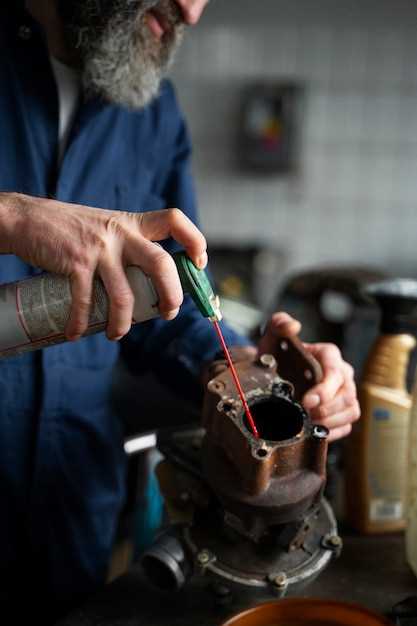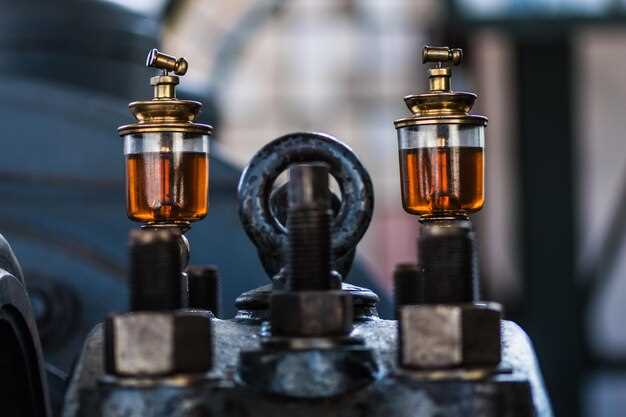
Maintaining vintage engines requires a deep understanding of the key fluids that contribute to their optimal performance and longevity. Among these fluids, oil plays a crucial role in ensuring that the engine operates smoothly, efficiently, and reliably. Whether you are a seasoned collector or a casual enthusiast, the selection and maintenance of oil can significantly impact the health of your vintage engine.
As vintage engines often operate under different conditions than modern counterparts, choosing the right type of oil is essential. Factors such as viscosity, composition, and additives should all be considered to cater to the unique requirements of older engine designs. Regular evaluation and change of oil not only help in minimizing wear and tear but also contribute to better fuel economy and performance stability.
Additionally, it’s important to recognize that vintage engines may have specific fluid needs that vary from model to model. Understanding these requirements allows for tailored maintenance practices that keep your engine in peak condition. By focusing on the right oil and adhering to a regular maintenance schedule, you can preserve the charm and functionality of your vintage engine for years to come.
Choosing the Right Coolant for Vintage Engines

Selecting the appropriate coolant for vintage engines is crucial for optimal performance and longevity. Vintage engines often have unique cooling requirements due to their age and design. Traditional antifreeze formulas may not be suitable, leading to potential overheating or corrosion.
When choosing a coolant, it’s vital to consider the engine’s material composition. Older engines might contain components made of copper, brass, or certain alloys, which can react adversely with modern coolants. It’s advisable to opt for a coolant that is specifically formulated for classic cars, as these tend to be ph balanced and incorporate additives to protect against corrosion.
Another aspect to take into account is the coolant’s temperature range. Vintage engines are often subject to higher operating temperatures, and a coolant with a higher boiling point can help prevent vaporization and engine overheating. Look for coolants with good thermal conductivity, which aids in effectively dissipating heat from the engine.
Additionally, ensure that the chosen coolant has the right mix for your climate. In warmer regions, a coolant with a lower freeze point might not be necessary, but in colder areas, it becomes essential to prevent coolant freeze and engine damage.
Furthermore, consider the maintenance aspect. Some coolants require regular replacement or flushing to maintain efficiency. Be aware of the specific requirements for your vintage engine. Using the right oil in conjunction with the coolant can also help maintain optimal engine temperatures while lubricating components effectively.
In summary, choosing the right coolant for vintage engines involves understanding the engine’s material, temperature requirements, climate considerations, and maintenance needs. Using the correct coolant helps ensure the preservation and performance of vintage engines for years to come.
Oil Types and Their Impact on Engine Performance

When it comes to vintage engines, selecting the right type of oil is crucial for optimal performance. The choice of oil significantly affects various aspects, including lubrication, temperature regulation, and overall efficiency. Understanding the different types of oil available helps in making informed decisions that can enhance engine operation.
There are primarily three categories of oil: mineral, synthetic, and semi-synthetic. Mineral oil is derived from refining crude oil and is commonly used in older engines. It provides sufficient lubrication but may lack the thermal stability and performance of newer alternatives.
Synthetic oil, on the other hand, is engineered for high-performance applications. It offers superior thermal stability, reduces friction, and maintains viscosity at extreme temperatures. Vintage engines, when using synthetic oil, may experience improved fuel efficiency and reduced wear over time.
Semi-synthetic oil combines elements of both mineral and synthetic oils, offering a middleware option that provides enhanced performance without the higher cost of full synthetic oils. This type can balance cost and efficiency, making it a popular choice for many vintage car enthusiasts.
The viscosity of oil is another crucial factor. It refers to the thickness of the oil and impacts how well it flows within the engine. Vintage engines often require a specific viscosity grade to ensure effective lubrication and protection against wear. Using the wrong viscosity can lead to inadequate lubrication and may cause damage over time.
Another important consideration is the oil change interval. Vintage engines may require more frequent oil changes compared to modern ones, as older designs often operate with looser tolerances and may have higher contamination rates. Regular monitoring and maintenance of oil quality is essential for preserving the engine’s integrity.
In conclusion, the type of oil used in vintage engines directly influences their performance and longevity. By choosing the appropriate oil type and adhering to recommended viscosity standards, vintage car owners can ensure their engines operate efficiently and maintain their historical value.
Maintenance Tips for Coolant and Oil in Classic Cars
Proper maintenance of coolant and oil in classic cars is essential for longevity and performance. These fluids play vital roles in cooling the engine and lubricating moving parts. Here are some key tips to ensure optimal function:
Coolant Maintenance
- Regular Inspection: Check coolant levels periodically. Low coolant can lead to engine overheating, which can cause significant damage.
- Use the Right Type: Always use a coolant that is compatible with your classic car’s engine. Consider a mixture of antifreeze and distilled water, usually in a 50/50 ratio.
- Flush and Replace: Flush the cooling system at least every two years. Old coolant can become corrosive and lead to deposits and clogs.
- Inspect Hoses and Connections: Check for any signs of wear, leaks, or weakening. Replace hoses if they appear cracked or brittle.
- Monitor Temperature: Keep an eye on the temperature gauge. An unusual rise in temperature may indicate issues with the coolant system.
Oil Maintenance
- Frequent Oil Changes: Change the oil regularly, typically every 3,000 to 5,000 miles. Older engines can accumulate contaminants more quickly.
- Quality Oil Selection: Choose high-quality oil that suits your engine’s specifications. Consider using additives designed for vintage engines for enhanced protection.
- Check Oil Level: Regularly check the dipstick for oil level and color. Dark or gritty oil signals that a change is needed.
- Inspect for Leaks: After engine operation, check for any oil leaks under the car. Addressing leaks promptly prevents major issues.
- Maintenance Records: Keep thorough records of all oil changes and maintenance performed on the engine. This practice boosts resale value and aids in future repairs.
By adhering to these maintenance tips for coolant and oil, classic car owners can ensure the engine operates smoothly for years to come. Consistent attention to these fluids not only enhances performance but also preserves the value of vintage vehicles.
